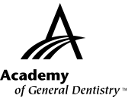|
Exercise No. 366
Subject Code: 070
Endodontics
The 15 questions for this exercise are based on the article, Comparison of the effectiveness of 3 irrigation devices for the cleaning of root canal walls instrumented with oscillatory and rotary techniques, on pages 71-74. This exercise was developed by Anthony S. Carroccia, DDS, MAGD, ABGD, in association with the General Dentistry Self-Instruction Committee.
|
Reading the article and successfully completing this exercise will enable the participant to:
- understand the implications of cleansing the root canal system with irrigants;
- learn the factors that affect successful irrigation; and
- appreciate any differences between the irrigation devices used in the study.
|

